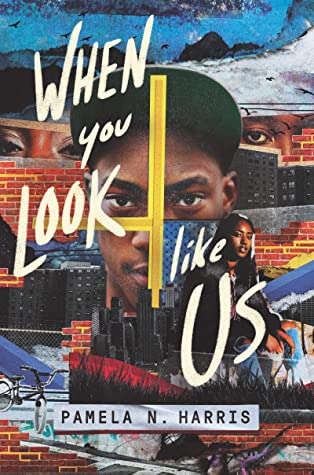Pamela N. Harris’ timely debut When You Look Like Us calls attention to an urgent epidemic of missing Black girls. Skillfully blending together mystery and social justice, identity and community, hurt and hope, Harris’ When You Look Like Us lends a speakerphone to the voices that often go unheard.
Set in Newport News, Virginia, Jay and his sister, Nicole Murphy, grow up with their grandmother Mimi in public funded housing known as “the Ducts.” After their father’s illness led to his passing and their mother’s addiction spiraled into her imprisonment, Mimi worked to raise her grandchildren in a caring community. Sixteen-year-old Jay aspires to repay his grandmother’s efforts by making things easy for her and giving her a comfortable retirement. So when he hangs up on his sister after she calls him out late one night, he believes he is helping Nicole get herself together. Helping her get back on track with school. Helping her create distance from her drug-dealing boyfriend. Except, after that phone call, Nicole goes missing. When it seems the Newport News Police Department and the limited media on the issue are more focused on her involvement with her boyfriend, Javon Hockaday, than bringing her home as soon as possible, Jay desperately tries to piece together the events of the night she went missing.
Jay’s questions regarding his sister’s disappearance first point to her boyfriend, Javon. But are those suspicions rooted in clues of Nic’s disappearance? Or are they rooted in the same assumptions that others follow when first pointing to Javon’s reputation as a drug dealer in a low-income community? Jay’s own realizations about the ways in which he is perceived socially and its influence on his self-image point to an internalization of the stereotypes about Black people perpetuated in our society, especially through the news.
Harris’s characters are thoughtfully well-crafted. Their motivations and backgrounds are revealed through more than one perspective. Rather than characters, they feel like real people who leap off the page. In this way, Harris delves into both racial and socioeconomic stereotypes from people outside the community as well as the internalization of those stereotypes.
Though various people in Jay’s life are ready to support him, such as his friend Bowie and the preacher’s daughter Riley, Jay struggles to open up and trust others to help him bring Nic home. Harris also sheds light on the impact of the community and Jay’s support system such as Mimi and the school counselor, Mrs. Pratt, in impacting Jay’s faith in his own future as well.
Pamela N. Harris’ When You Look Like Us may be a young adult contemporary novel, but its appeal is universal. It may be about people who “look like us”—brown or black skin, “braids or fades” as the synopsis states—but When You Look Like Us is a book that makes its readers feel seen.
When You Look Like Us by Pamela N. Harris was published on Jan. 5, 2021.
Advertisement
Advertisement
